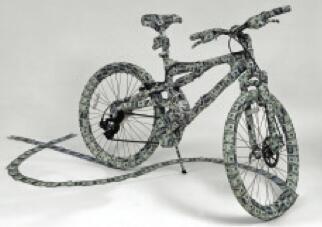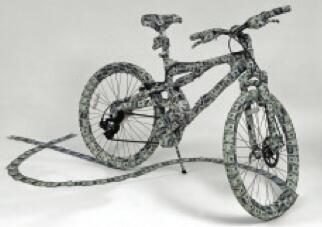Toys Art Us
Curator’s Voice, Miami
I have always been obsessed with the perverse character that the naïve image of toys hides. A powerful ideological weapon which, like a Trojan Horse, irrupts via the ludic and settles surreptitiously, shaping the personality of the infant − that adult in the making −, the toy is a transvestite object par excellence.

Such is the idea that animates the exhibition Toys Art Us, featured at the Curator’s Voice Art Projects. The curatorial proposal, which includes more than twenty-five international artists, is aligned with the tradition of investigation and questioning of the ludic element explored by artists such as Jeff Koons, Takashi Murakami, and Yoshitomo Nara, among others.
Toys Art Us is a sharp exhibition with a strong content of irony and criticism, where the objects presented openly flirt with the boundaries between work of art, object of entertainment and ideological tool. In this respect, the work of Amy Moore is symptomatic. The use of the milk bottle is established as metaphor: the mother’s breast has been replaced by an industrial object; the immedi- ate association with terms like Alma Mater (Nourishing Mother) is inevitable, leading us by the hand to new connotations regarding this work. Lamia Korshid’s excellent photographic series is based on the construction − and imposition − of gender roles represented by the doll as social prototype. Also noteworthy in this sense are the proposals presented by Leslie Gabaldón, Chu Teppa, Nahila Campus, Mariana Thome and Mariana Monteagudo − in the case of the latter artist, through an interesting work of recovery of the popular tradition of cloth dolls, reinterpreted here as morbid sculptures. Other essential sub-themes within the show are those of the toy-as-merchandise and the ecology-related toy. In the case of the former, Mariano Costa Peuser, Michelle Bergeron and Massimo Gammacurta’s proposals stand out.
Costa Peuser’s Financial Bike features an excellent allegory of the commercial relationships that hide behind the toy. Financial fulfillment (incarnated here by the unfinished trace of a dollar sign left by the bicycle as it moves forward) is thwarted, for its definitive achievement prevents the realization of the object’s primary function.
On the other hand, Gammacurta’s series, Lolli-Pop, appropri- ates well-known design brands such as Dior, Yves Saint Laurent, Coach, Louis Vuitton, among others, to create delicious sweets that evince the transference of the toy’s functions to the consumption of brand products during the passage from childhood to adolescence. The resulting works, endowed with great plasticity, appropriate the language of advertising photography for the effective creation of a halo that is at once seductive and scary. From an etymological point of view, the series plays with the notion of the “Lolitas” and the Pop impact of advertising on our everyday life. Nestor Arenas, Rosario Bond, Jairo Ruedo, Ena Marrero and Alicia Meza address the subject of the toy on the basis of the ecological urgencies of our time. Resorting to playful commentary, Toys Art Us consti- tutes a scathing interpretation of contemporary society.





